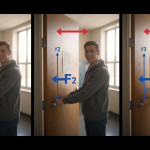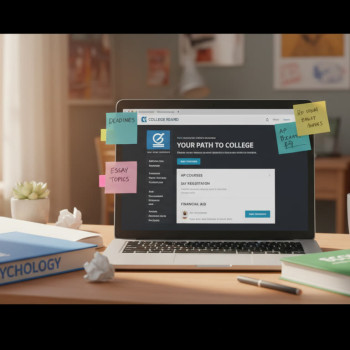Perfectionism Pitfalls: Why Progress Beats Perfect for AP Students
If you’re prepping for AP exams, you already know the pressure: college credit, transcript weight, and the quiet voice in your head that asks, “What if I don’t get a 5?” Perfectionism can feel like an ally at first — it pushes you to study harder, color-code your notes, and rework practice essays until your pen runs out of ink. But over time it can become a trap. Instead of moving forward, you get stuck polishing what’s already good, avoiding practice tests because they might reveal imperfection, or spending hours perfecting a single problem set while other topics pile up.
This post is a human, practical conversation about how to shift from perfect to progressive: how to manage expectations, design study habits that actually scale, and keep momentum during the months that matter. You’ll find concrete strategies, real-life examples, a clear study checklist, and a comparison table to help you apply the ideas to your own AP plan. We’ll also highlight where targeted support — like Sparkl’s personalized tutoring — can naturally fit into your study life when you need one-on-one guidance, tailored study plans, or data-driven insights to accelerate progress.
Why Perfectionism Shows Up for AP Students
AP courses and exams are high-stakes in reputation if not in consequence. For many students, perfectionism grows from a few common sources:
- External pressure: parents, college expectations, or school culture that valorizes top scores.
- Internal standards: a personal identity around doing everything flawlessly.
- Fear of failure: the anxiety that one lower score will derail college plans.
- Comparison traps: seeing classmates’ achievements and assuming you must match or exceed them.
At first, perfectionism can be productive — it fuels attention to detail and disciplined practice. But when the cost is anxiety, procrastination, or a narrow focus on minor details instead of mastery, you’ve crossed into a pitfall.
Three Signs Perfectionism Is Hurting Your AP Prep
- Analysis paralysis: you revise study notes endlessly instead of taking practice exams.
- All-or-nothing thinking: one bad score means “I’m doomed,” which reduces motivation.
- Imbalanced learning: obsessing over one unit while neglecting others you also need to master.

Progress Over Perfect: Mindset Shifts That Work
Switching your guiding principle from “perfect” to “progress” is less about lowering standards and more about making success sustainable. Here are mindset adjustments that feel small but have huge effects.
1. Redefine Success as Forward Motion
Success isn’t a single perfect exam score; it’s consistent improvement. Measure success by what you did this week that you didn’t do last week: took a practice FRQ, improved timing on multiple-choice sections, or moved from vague to specific study goals.
2. Embrace the Process, Not Just the Outcome
AP mastery is cumulative. Score improvement follows habits: targeted practice, test strategy, and reflection. Focus on building sustainable study loops: practice, review, adjust, repeat.
3. Normalize Mistakes as Data
Every wrong answer tells you exactly what to study next. Treat mistakes like signposts, not indictments. When you analyze errors you convert anxiety into a practical to-do list.
Practical Strategies: Study Smart, Not Perfect
Below are tactical habits you can try this week. Each one is designed to unlock momentum — small wins that compound into measurable improvement.
Strategy 1 — Scheduled Practice Over Endless Review
Instead of re-reading chapter notes for hours, schedule short, frequent practice blocks. Use timed practice tests that mirror AP exam conditions and rotate subjects to maintain broad coverage.
Strategy 2 — Prioritize High-Impact Tasks
Not all studying is equal. Practice tests, past FRQs, and worked problem sets yield higher returns than passive highlighting. Use an 80/20 lens: focus on the 20% of activities that drive 80% of score gains (past AP problems, scoring rubrics, and timed sections).
Strategy 3 — Use Micro-Goals to Beat Procrastination
When perfectionism makes starting hard, break tasks into tiny, achievable pieces: “Do one MCQ set (10 min)” or “Outline one FRQ response.” Micro-goals reduce the intimidation factor and build momentum.
Strategy 4 — Simulate Test Conditions Regularly
Run at least one full timed practice exam every 2–3 weeks. Simulated testing builds stamina and clarifies time-management problems that perfectionist reviewing hides. After each exam, spend equivalent time analyzing errors and planning focused follow-ups.
Strategy 5 — Schedule a Weekly Reflection Session
Once a week, spend 20–30 minutes reflecting: What improved? Where did you stall? What’s one small change for next week? Reflection turns practice into progress instead of ritual.
Study Plan Template: Flexible, Focused, Forgiving
Here’s a simple, balanced weekly plan you can adapt. It assumes you’re juggling multiple AP subjects and schoolwork. Swap subjects and adjust durations to fit your calendar.
| Day | Main Focus | Time Block | Goal |
|---|---|---|---|
| Monday | Core Concept Practice | 60–90 minutes | Target a weak unit with active problems |
| Tuesday | Timed MCQ Practice | 45–60 minutes | Improve pacing for multiple-choice |
| Wednesday | Schoolwork + Short Review | 30–45 minutes | Consolidate notes and flashcards |
| Thursday | Free-Response Practice | 60 minutes | Write/make rubric-based corrections |
| Friday | Mixed Practice & Weak-Spot Drill | 45–60 minutes | Target two lingering problem types |
| Saturday | Full Practice Test (every 2–3 weeks) | 3–4 hours | Simulate test day and review results |
| Sunday | Rest + Weekly Reflection | 20–30 minutes | Plan next week, adjust goals |
How to Use the Plan Without Chasing Perfection
- Set time limits for revision — once you’ve polished a topic for the scheduled time, move on.
- Include scheduled low-effort recovery time. Rest is studying too.
- Allow for imperfect practice: an exercise done under real conditions is worth far more than a perfect but hypothetical review.

Real Examples: How Students Turned Perfectionism Into Progress
Stories are useful because they show how strategies play out in real life. Here are two composite examples that capture common experiences among AP students.
Case A — Maya: From Endless Revisions to Targeted Practice
Maya spent weeks re-writing her AP Biology notes in different colors and formats. She felt productive but her practice test scores didn’t change. A counselor suggested timed practice and a simple rule: stop reformatting after 30 minutes and take a 30-question MCQ set. Maya resisted at first, worried about exposing her weaknesses. After one simulated test she discovered her pacing was poor and her Venn diagram questions were consistently wrong.
She pivoted to focused drills — 20-minute sessions on Venn diagram problems twice a week — and ran a full practice test every two weeks. Within six weeks her scores rose and, importantly, her study time felt less fraught. The color-coded notes were still there, but used as quick reference rather than a moat keeping her away from practice tests.
Case B — Jordan: Perfectionism Caused Procrastination
Jordan refused to start FRQs until he felt “ready”; readiness never came. He began to fall behind and the looming schedule made him anxious. His teacher suggested micro-goals: “Write a 5-minute outline for one FRQ tonight.” Doing the outline for three nights in a row made outlines feel manageable. He then wrote a full timed FRQ and scored the paper with the rubric. The first score wasn’t great, but the targeted feedback gave him an explicit checklist of what to fix. That checklist replaced vague perfectionist standards with concrete next steps.
Tools and Techniques: What Actually Helps
Not every study tool is equal. Here are things proven useful for AP prep and how to avoid perfectionist misuse.
Practice Tests and Progress Tracking
Regular, timed practice tests are essential. Track trends, not single results — a single low score is not a verdict. Use simple tracking sheets to plot score trajectory across weeks. This transforms panic into patterns.
Rubrics and Model Answers
Rubrics decode what graders value. Use them to guide answers and to create clear targets for improvement, rather than as a checklist to achieve perfect language. Model answers show structure — adapt them, don’t copy them verbatim.
Targeted Tutoring
One-on-one tutoring works well when it targets specific weaknesses and provides accountability. If your perfectionism prevents you from starting practice, a short series of focused tutoring sessions can jump-start action. Sparkl’s personalized tutoring, for example, offers tailored study plans, expert tutors, and AI-driven insights to pinpoint skill gaps so sessions focus on progress, not pressuring perfection.
How to Build a Study Environment That Favors Progress
Perfectionism thrives in environments that reward endless tweaking. Create conditions that reward iteration.
1. Timebox Everything
Give yourself strict time limits for tasks. When the timer ends, move on. Timeboxing reduces the temptation to chase incremental improvements forever.
2. Use a Visible Progress Tracker
A wall calendar or digital habit tracker that shows completed practice tests, review sessions, and micro-goals makes small wins visible. Momentum is contagious: seeing streaks encourages continuation.
3. Make Feedback Quick and Actionable
After any practice test, immediately note three things: one strength, one key weakness, and one next action. Keep the action specific and short — for instance: “Review the triangle inequality and do three prep problems.”
When to Ask for Help — and How to Do It Without Shame
Asking for help is a progress strategy, not an admission of failure. Reach out when:
- You can’t turn practice into results despite consistent effort.
- Perfectionism is causing avoidance or harmful stress.
- You need accountability to keep a study plan on track.
Explain clearly what you’ve tried and what you want: “I’ve been doing timed MCQs weekly but my pacing is still off. Can we work on test-day pacing strategies?” That kind of specific ask helps tutors, teachers, or mentors provide targeted support.
Balancing Well-Being and Ambition
High achievement and mental health aren’t mutually exclusive. Scheduling rest and prioritizing sleep will improve learning more than a late-night cram session that fuels perfectionist rumination. Build non-negotiable breaks into your calendar and treat them as study tools, not rewards you only earn after perfect work.
Quick Self-Care Checklist for Busy AP Students
- Sleep: Aim for consistent bedtimes when possible.
- Movement: Short daily exercise helps cognitive clarity.
- Nutrition: Quick, protein-rich snacks during long study sessions stabilize focus.
- Social: Short check-ins with friends can reduce stress and reset perspective.
Progress Metrics: What to Track
Forget perfection metrics like “no mistakes allowed.” Track metrics that reflect improvement and resilience.
- Practice Test Frequency: how many full sims per month.
- Error Patterns: recurring mistake types across tests.
- Time Management: minutes per section and changes over time.
- Response Quality: rubric-based improvements on FRQs.
Final Thoughts: A Practical Invitation to Progress
Perfectionism can be persuasive — its voice feels urgent and authoritative. But remember: exams reward applied practice more than polished preparation. Prioritize actions that produce evidence of growth. Start with one small change this week: a timed 30-question MCQ set, a 10-minute FRQ outline, or a weekly reflection session. Celebrate the change. Repeat it.
If you find yourself stuck, targeted help can make all the difference. Personalized tutoring that focuses on your weak spots, sets realistic milestones, and gives you actionable next steps will help you turn those small wins into steady improvement. Sparkl’s approach — 1-on-1 guidance, tailored study plans, and AI-driven insights — is designed to help students move from stuck to steadily improving without turning study time into a perfection trap.
Remember: progress compounds. Each imperfect practice session reduces uncertainty, teaches you something tangible, and moves you closer to the scores you want — and to a healthier relationship with achievement. Choose progress today and let perfectly imperfect practice carry you to the finish line.
Quick Start Checklist: 7 Steps to Move from Perfect to Progress
- Set one micro-goal for today (10–30 minutes).
- Schedule one timed practice block this week.
- Timebox revision sessions to avoid endless polishing.
- Run one full simulated test every 2–3 weeks.
- Keep a weekly reflection log of strengths and single next actions.
- Track one progress metric (practice frequency, pacing, or error type).
- Ask for targeted help if you’re stuck — a short tutoring series can break the logjam.
There’s no perfect path to AP success. There is, however, a clear path: steady, focused practice, honest feedback, and the willingness to treat mistakes as the raw material of improvement. Choose the path that keeps you moving forward.
























No Comments
Leave a comment Cancel